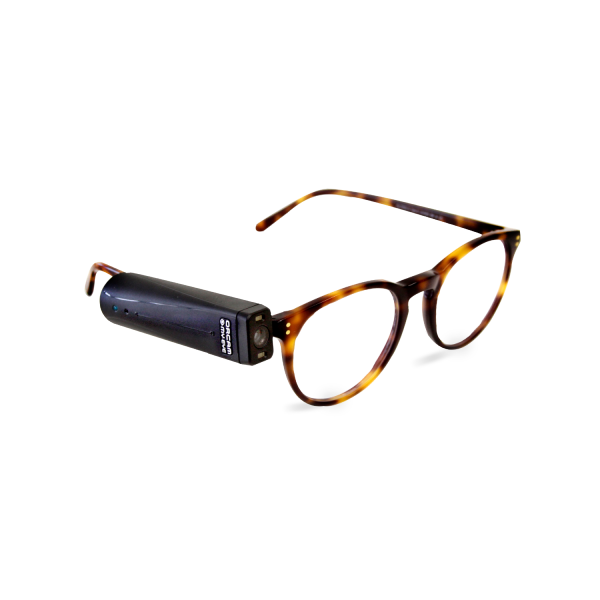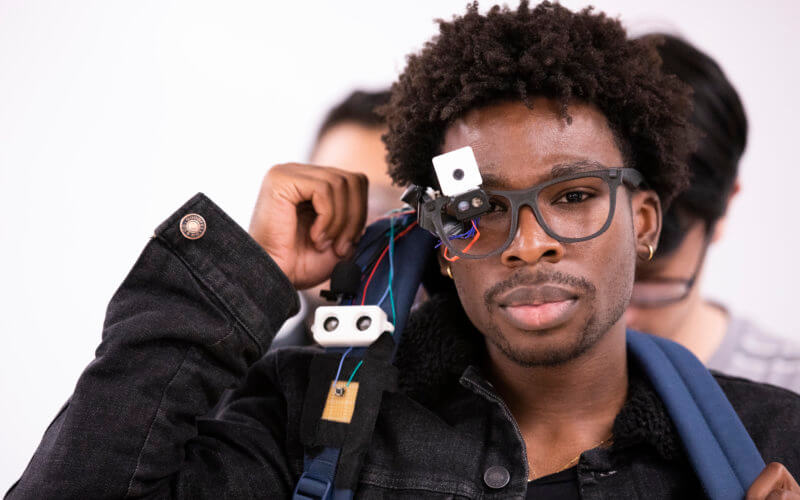Empowering Independence With Assistive Technology for the Blind
The assimilation of assistive modern technology for people who are blind or visually impaired stands for a considerable development in cultivating self-reliance and enhancing quality of life. With a series of gadgets-- from display visitors to innovative tactile devices-- these technologies not only assist in navigation and interaction however additionally advertise social inclusion and engagement in different facets of life. As we check out the diverse kinds of assistive tools and their real-world applications, it comes to be clear that the impact is profound. Yet, the evolution of this technology elevates important questions regarding ease of access and future advancements that necessitate further exam. Assistive technology for the blind.
Recognizing Assistive Technology
Although assistive technology has actually developed substantially throughout the years, its fundamental objective remains the exact same: to improve the lifestyle for people with handicaps, especially those that are visually impaired or blind. This innovation incorporates a broad range of devices and gadgets that promote independence and functionality in everyday activities.
Assistive innovation can be classified right into state-of-the-art and low-tech options, each made to meet details needs. State-of-the-art tools typically consist of software application applications, specialized equipment, and adaptive tools that utilize innovative technology to provide support in numerous contexts. Conversely, low-tech options might include day-to-day products that are modified to improve ease of access, such as magnifiers or tactile pens.
The integration of assistive modern technology right into the lives of individuals that are blind or visually impaired not only promotes freedom however also fosters social inclusion and engagement in instructional and expert environments. By leveraging these innovations, users can navigate their environments, gain access to info, and communicate properly, consequently enhancing their total lifestyle. Recognizing assistive technology is crucial for advocates, experts, and caretakers who aim to support people in maximizing their prospective and attaining better self-reliance.
Kinds Of Assistive Gadgets
Assistive tools for the blind and visually impaired are important tools that enhance daily obeying attending to details difficulties run into by customers. These devices can be broadly categorized into three main kinds: optical devices, electronic devices, and sensory tools.

Sensory gadgets, such as Braille screens and tactile maps, provide alternate ways to obtain information. Braille shows convert digital message into Braille, allowing customers to check out through touch. Tactile maps supply spatial understanding via raised textures and lines, enabling for better environmental understanding.
Together, these assistive devices encourage individuals with visual problems to engage more fully with their surroundings, advertising better self-reliance and confidence in daily tasks.

Effect On Every Day Life
The combination of assistive modern technology into the day-to-days live of people that are blind or aesthetically impaired significantly boosts their capability to engage and navigate with the globe around them. Devices such as screen readers, Braille presents, and mobile applications promote accessibility to details, allowing customers to involve with digital content, communicate properly, and take care of day-to-day tasks independently.
Additionally, technologies like wise glasses and navigating applications give real-time assistance in unknown settings, improving flexibility and self-confidence. These tools make it possible for users to identify barriers, read indicators, and also acknowledge faces, thus promoting a sense of freedom in public rooms. Furthermore, home automation systems, which can be managed via voice commands, enable people to manage their living atmospheres better, enhancing comfort and safety.
The influence of assistive technology prolongs beyond functional tasks; it promotes social incorporation and emotional wellness. By bridging the gap in between individuals and their surroundings, these modern technologies encourage customers to take part fully in neighborhood activities, seek instructional chances, and participate in meaningful partnerships. Ultimately, the development of assistive modern technology contributes in redefining the possibilities for people who are blind or visually damaged, bring about an extra accessible and comprehensive culture.
Success Stories and Endorsements

Another effective testimony originates from Mark, a current college graduate that made use of display analysis software throughout his academic trip. This innovation allowed him to gain access to program materials and take part see here now in conversations, ultimately bring about his effective transition right into the labor force. Mark debts assistive modern technology for equipping him to accomplish his job objectives, highlighting its function in leveling the playing area for individuals with visual impairments.
Additionally, recreation center have actually reported boosted involvement in their programs thanks to the intro of easily accessible electronic systems. These systems have made it simpler for people to link, share sources, and support each other. These success stories collectively underscore the extensive result of assistive modern technology in cultivating independence, enhancing top quality of life, and damaging down barriers for the aesthetically damaged and blind area.
Future Fads in Assistive Tech
Arising innovations are positioned to change the landscape of assistive tech for individuals that are blind or visually damaged. Technologies in expert system (AI) and maker learning are boosting the abilities of tools, making it possible for more intuitive customer experiences. AI-driven applications are progressively able to read and recognize items message out loud in real-time, giving users with valuable info regarding their environments.
In addition, improvements in wearable modern technology are creating new chances for self-reliance. Smart glasses geared up with increased truth attributes can overlay critical details onto the user's field of view, helping with navigating and interaction with the environment. The integration of Net of Things (IoT) gadgets is simplifying availability in wise homes, allowing users to control devices and obtain notifications with voice commands or tactile user interfaces.
The growth of braille display screens and responsive responses systems is also on the rise, promoting accessibility to electronic content and enhancing communication. As these technologies continue to advance, they assure to boost everyday living, academic opportunities, and employment potential customers for individuals with aesthetic disabilities. Continuous partnership in between technologists, customers, and advocacy groups will certainly be vital in making certain these developments fulfill the requirements of the neighborhood successfully.
Conclusion
To conclude, assistive modern technology plays an essential duty in boosting the independence of individuals that are blind or aesthetically impaired. By giving necessary tools and resources, these innovations facilitate boosted gain access to, interaction, and navigating to info, thereby promoting autonomy and self-esteem. The transformative influence of assistive devices not just promotes reliable communication with the environment yet additionally urges social addition and participation in numerous aspects of life, eventually equipping individuals to thrive within their neighborhoods.
The integration of assistive modern technology for people who are visually impaired or blind stands for a considerable innovation in cultivating independence and enhancing top quality of life.The assimilation of assistive innovation right into the lives of individuals that are blind or visually harmed not only promotes autonomy but also cultivates social inclusion and website here involvement in educational and expert environments. Ultimately, the development of assistive technology is instrumental in redefining the possibilities for people that are blind or aesthetically damaged, leading to a much more easily accessible and comprehensive culture.
Several people who are blind or visually impaired have actually shared inspiring success tales that highlight the transformative effect of assistive innovation on their lives.In final thought, assistive technology plays a pivotal duty in boosting the freedom of people who are aesthetically useful link impaired or blind.